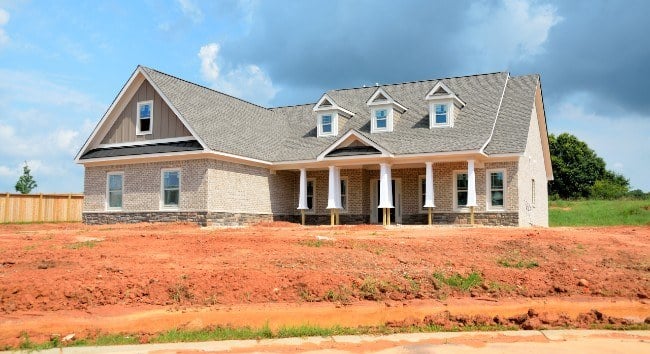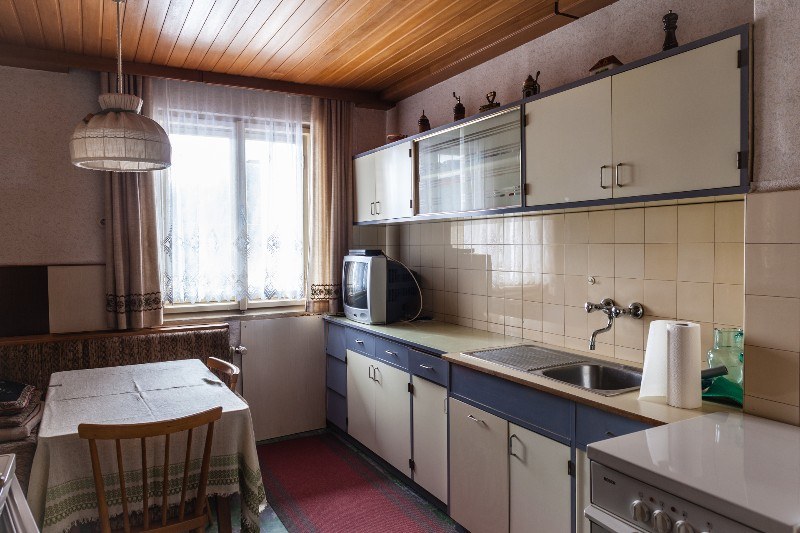
Building a House in Florida: What to Expect (and what you'll pay)
Posted on Oct 23, 2020
Florida’s housing market is hot, and the high cost of homes right now has a lot of people...

Posted on Oct 23, 2020
There is a frustrating lack of available homes for sale in real estate markets around the country. Many would-be homeowners find themselves outbid again and again in ultra-competitive markets – despite offering to pay full, or even above asking price. The available housing stock is simply too low for the number of people actively searching for homes.
For this reason, many people are wondering, “is it cheaper to build your own home?” The answer to this question can be complicated, since each home is unique and costs vary widely by location. Here’s what you need to know.
The average cost to build a home in the U.S. is $314,924 at an average of about $150 per square foot, according to Home Advisor’s data.
Meanwhile, the median cost of an existing home in the U.S. is $248,857, according to Zillow – but that’s with a median price per square foot of $153.
Based on the average home sale, it’s definitely cheaper to buy your home rather than build it. On the other hand, the price per square foot is fairly comparable – it’s just that most people opting for new homes want larger homes.
There’s a few other things you need to consider before making a decision, though.
It’s impossible to know exactly how much it will cost to build you home until you do your research. Why? States, counties and cities all have different rules and regulations when it comes to home building. Labor costs and the costs of building materials also vary widely by region.
“Builders add on all of state and county taxes and fees and pass them on to the buyer in the sales price,” notes DC-based buyer agent Jeannette Mitchell.
Hawaii, for example, has the highest cost for building a home – perhaps not surprisingly, it also has the highest estimated labor cost, at $27.01/hour. The cheapest state to build a home in is Oklahoma, and it has a corresponding lower average labor cost at $14.19/hour (source: GoBankingRates).
Of course, people living in states with more expensive homes often have higher average incomes, so these numbers aren’t necessarily as disparate as they seem.
And then there’s states like California, which have more extensive building codes and standards that push the cost of new homes way above the national average.
Here is a ranking of all 50 states from most to least expensive building costs, so you can get a sense of what to expect.

As noted, material costs differ by state. Current events, though, can also impact the price of materials.
“Just last week, NAHB (the National Association of Home Builders) announced that due to the wildfires out west, the average new construction home will cost $16,000 more,” explains Mitchell.
Ongoing trade disputes with China can push the cost of construction up as well thanks to numerous Chinese imports used in the home construction industry. In 2019, the NAHB said that home prices had gone up in many states as a result of economic sanctions on China.
“Currently, it is considerably cheaper to purchase an existing home versus building new,” says architect/homebuilder Michael Menn. “Since May of 2020, the cost of lumber has risen considerably. Additionally, the cost of labor and other building materials has risen due to COVID-19. Many manufacturing plants have closed, resulting in a significant shortage of building materials available.”
When you buy an existing home, the lot comes with it. But when you build a home, you need to buy the lot first.
Lot prices can range from $5,000 in rural areas, to $100,000 in urban areas where space is limited. If you’re looking for a lot in a popular neighborhood, your lot may have an existing “teardown” building on it, and you’ll need to figure in the cost of demolishing any existing or crumbling structure currently on the lot. According to Home Advisor, a complete demolition can cost up to $25,000, depending on complexity.
In other words, buying a lot in a metro area can greatly increase the cost of building your own home.
There are three ways to build a new home.
“When building your own home, you generally have a lot more customization options, and sometimes even full freedom to have it built like you want,” explains Jesse Silkoff, Co-Founder and President of MyRoofingPal, an online marketplace that connects people to the best roofers across the country. “With that, though, comes the additional price tag as the builder still needs to profit, not to mention some material is harder to come by during the current pandemic, so that could increase the price or make some things unavailable. To reduce the costs of a new build, you can always opt for cheaper, readily available materials, or even recycled materials. You can also allow for a less time sensitive timeline.”
Homebuyers interested in new construction often preview their potential home by viewing a model home, but be prepared:
“Builders advertise the lowest price of the smallest model with no upgrades,” warns Mitchell. “The model home(s) that are available to see have many options that are not included in the base home price. Buyers should ask, "what exactly is included in the base price of this home?" Once you start adding in options to personalize the house, the price can go up by tens of thousands of dollars.”

Not all costs can be calculated at the closing table. When you buy an existing home, you’re inevitably buying into a wide range of appliances and home features with a limited lifetime. Homeowners may eventually need to:
And these are just a handful of examples.
While it’s possible the owner of a new home may have to deal with some of these problems, they have the advantage of starting out with a brand new home, with brand new appliances and features – so major maintenance issues may not crop up until decades later.
Another future cost to consider is energy efficiency. New homes are typically built with more efficient materials – whether that’s insulating double-paned windows or new refrigerators that use a fraction of the energy older models require. Older homes, by contrast, often leak heat during the winter and cool air during the summer, and have corresponding higher utility bills – and replacing your old windows with energy efficient ones costs thousands of dollars.
“Resale value when selling is the primary advantage [to building your home],” says George Sheaffer, owner of Virginia-based Sheaffer Construction. “Everything is in line with newer code standards, ensuring a stronger, energy-efficient, under-warranty (5 years) home. Plus, you have the bonus of building it the way you want."
So: while new homes often have more upfront costs, you may benefit in the long run by lower utility bills, less money spent on expensive maintenance, and a better return on your investment when you eventually sell your home.
As we’ve seen, it’s more expensive to build a house than to buy a house. However, it’s also more expensive in upfront costs.
Data shows that overall, it costs more to build your own home when compared to a same-sized pre-existing house in the same market - though in the long run, homeowners of newer homes may have lower expenses and repair costs. If you’re willing to opt for a smaller new home, then you can potentially get away with spending a similar amount – and making more money when you go to resell it.
Subscribe to our newsletter to get essential real estate insights.

Posted on Oct 23, 2020
Florida’s housing market is hot, and the high cost of homes right now has a lot of people...

Posted on Oct 23, 2020
Virginia’s real estate market has been hot - to the point that many people are wondering whether it...

Posted on Oct 23, 2020
Home prices have shot up over the past few years, making homebuying an even more challenging...